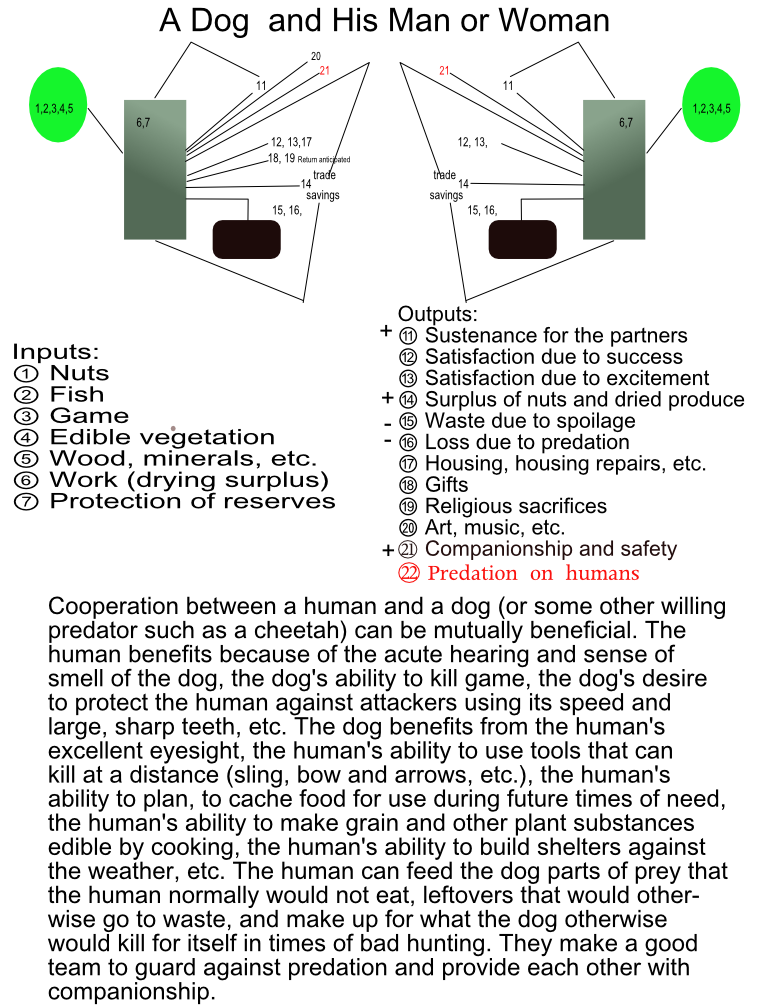Hunter-gatherer with a Partner
A solitary hunter-gatherer can gain much by taking on a partner, either
a dog or other suitable predator, or another human being. The simpler
partnership crosses species lines, so the differing characteristics of
the two species, and how they complement each other, account for much
of the utility of such an arrangement.

Forming a partnership with a dog, cheetah, or some other animal willing
to cooperate with humans in hunting could be a very beneficial
arrangement for both organisms. Some of the benefits, such as the
enjoyment of the antics of a puppy, are difficult or impossible to
quantify. However, the success of the hunter can be reckoned in terms
of the amount of food and other valuable substances that could be
cached year after year. There are motivations for working on resources
obtained from the world that can still be seen in operation today.
The immediate benefits to members of this partnership are the varous
satisfactions of immediate needs: food, water, protection from the
elements, etc. These resources may be expended as soon as they are
obtained. For the dog it is almost always this way. Except for the
occasional item of prey that is buried on one day to be eaten the next,
or the bone that may survive for a while longer, everything that the
dog catches is eaten or fed to pups almost immediately. A human hunter
could operate this way in a territory that was rich with edible
resources year round. But humans have long practiced saving useful
things including food. Grain and nuts could be stored without further
processing, but meat, fish, fruit, berries, etc. will spoil if they are
not dried and stored in a location that will keep them dry. Humans also
will collect things for their beauty. When trade develops, precious or
semi-precious stones may be traded for food. A fine agate stone will
not decay, but it may be stolen.
[To the previous essay] [To the next essay]
